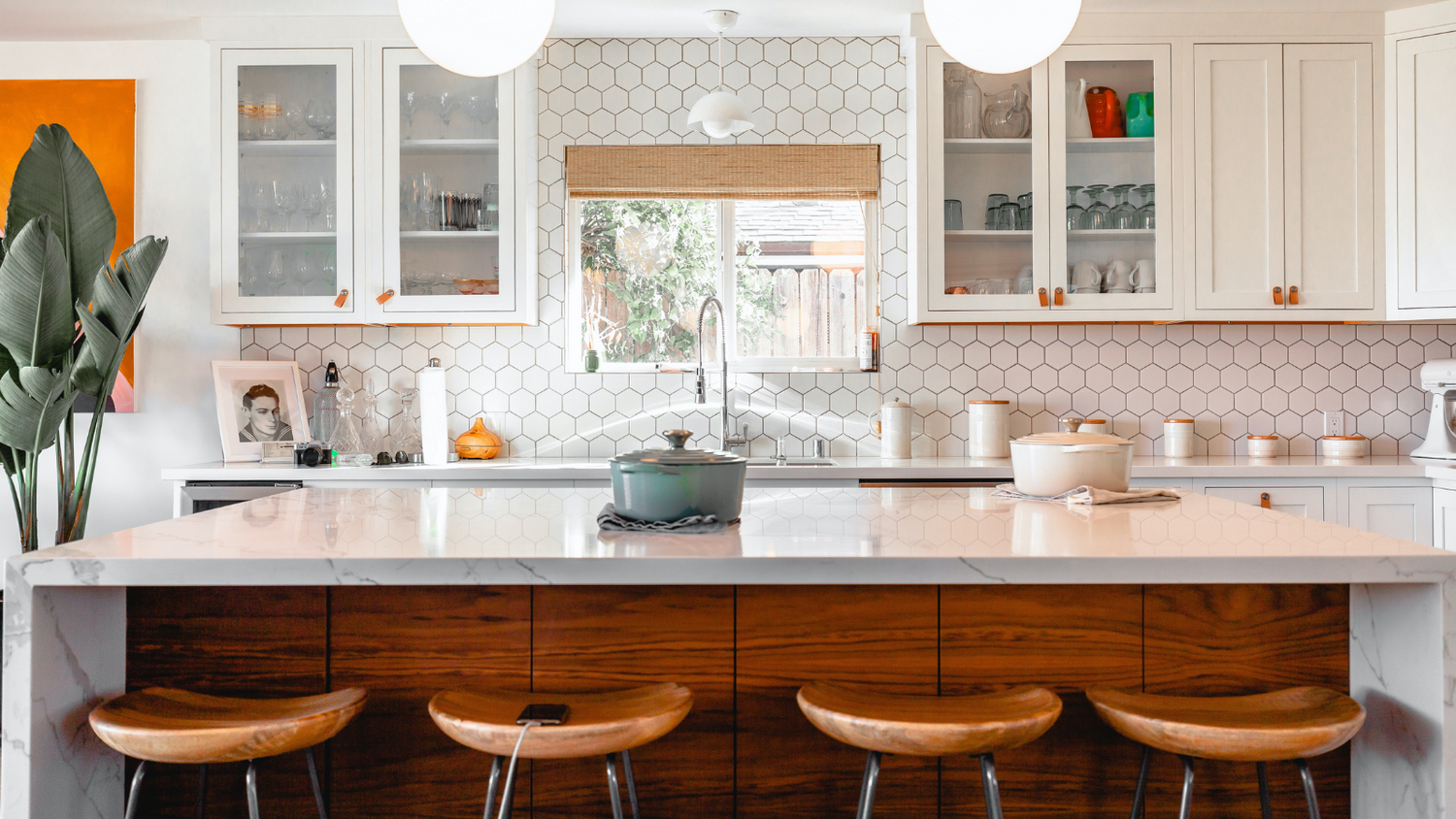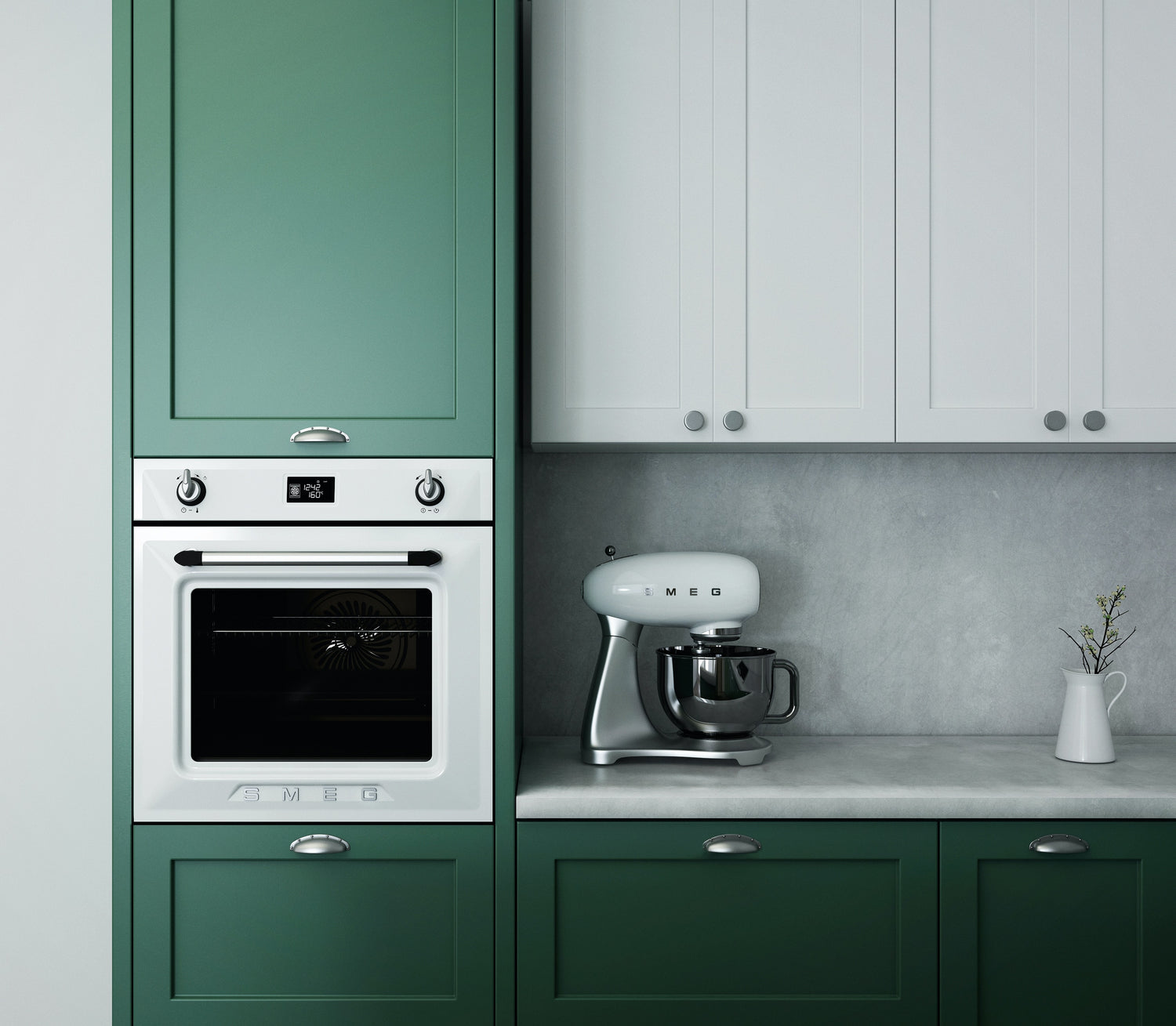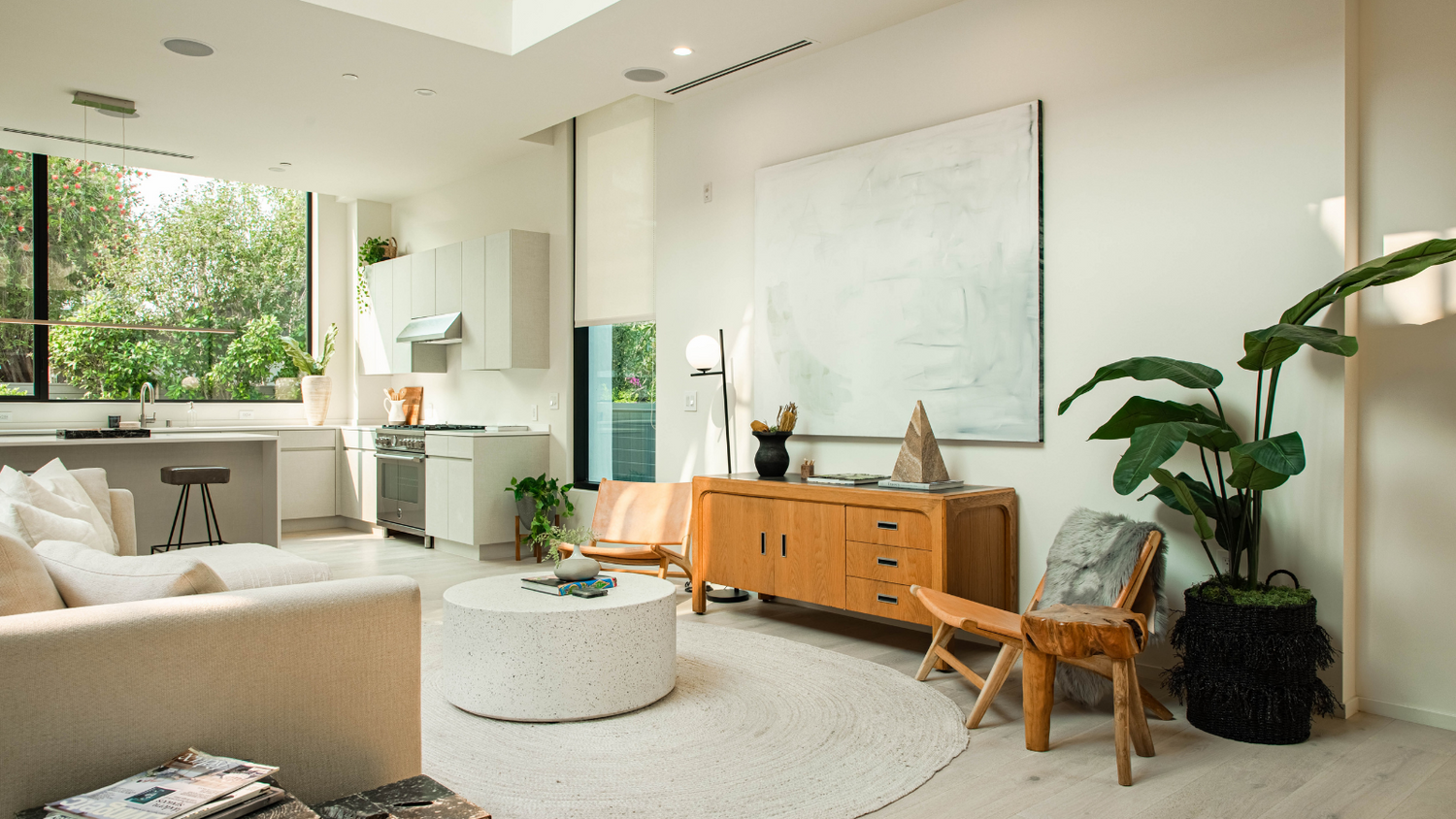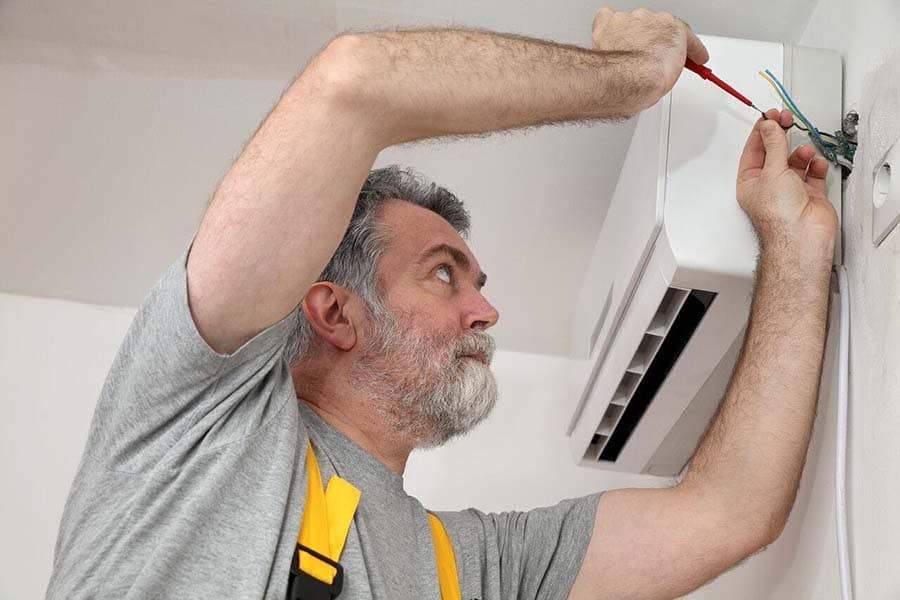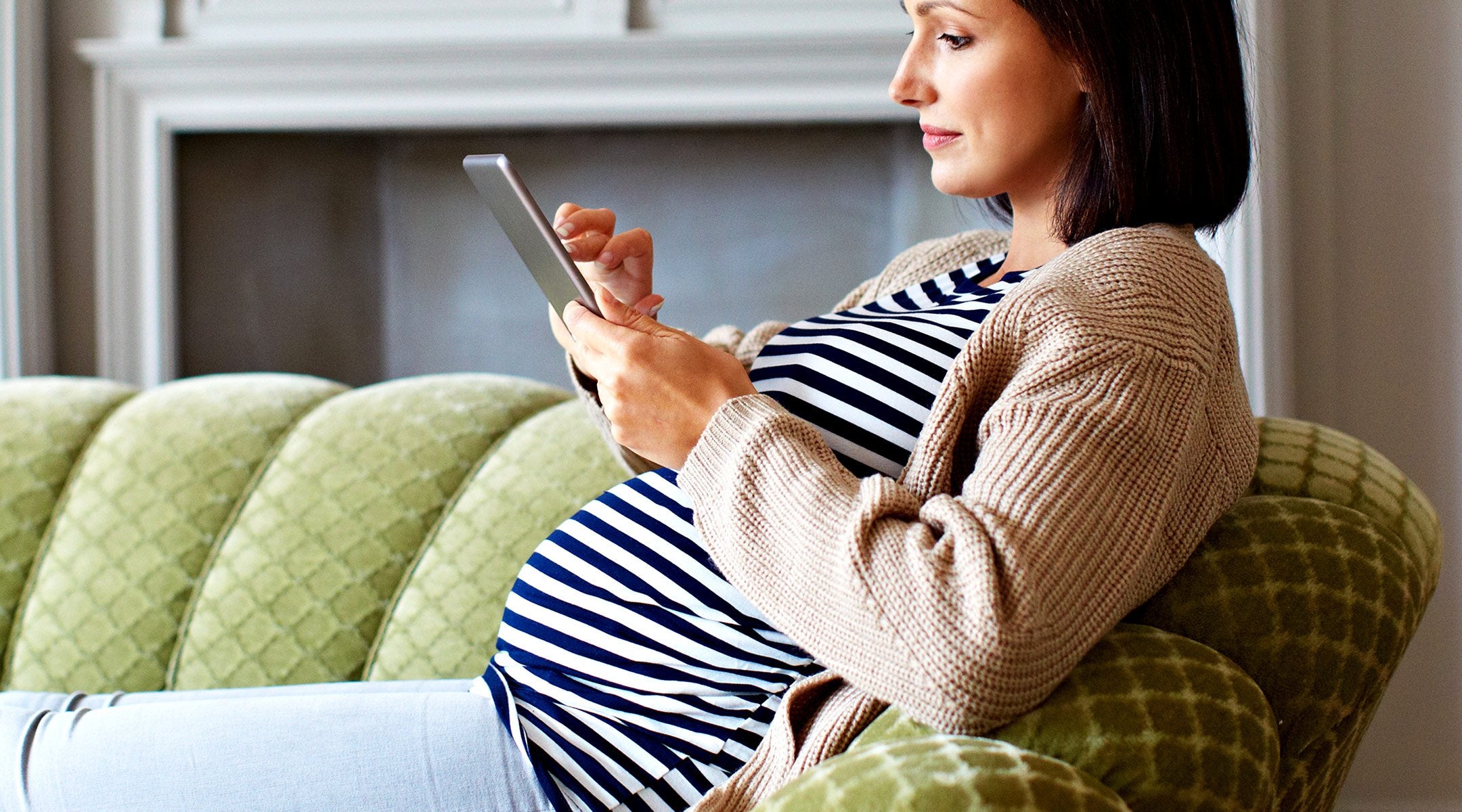

Smart Kitchen Lighting Ideas
Increasingly, the kitchen has become the new focal point of the modern home; we spend more time and money on the kitchen than any other room of the house (the average kitchen renovation tables at around £10,000 according to the home renovation and design website Houzz). Whilst extensive renovation can be expense, the addition of smart lighting and power can add the ‘wow’ factor for a relatively low cost. The kitchens growing multifunctional role as a space in which to cook, clean and socialise also means that the ability to create flexible lighting scenes can prove very practical. Indeed, according to Smart home manufacturer Lightwave, the kitchen is increasingly the room where first time smart home customers begin their journey. Here are some of the best ways to smarten up your kitchen lighting.
Smart Dimmers
 What type of lighting is most suitable for the kitchen? Whilst this will, of course, depend on the individual space and decor, there are some elements that may be more universal. Pendant or suspension lights can suit any type of kitchen; they provide a wide angle of light for a variety of tasks, and should be centred over the kitchen islands and dining areas. To get the best use out of these lights, a dimmer switch is necessary so that they can be dimmed to create more sociable and relaxed atmospheres when necessary whilst maintaining a higher intensity for cooking and other tasks.
What type of lighting is most suitable for the kitchen? Whilst this will, of course, depend on the individual space and decor, there are some elements that may be more universal. Pendant or suspension lights can suit any type of kitchen; they provide a wide angle of light for a variety of tasks, and should be centred over the kitchen islands and dining areas. To get the best use out of these lights, a dimmer switch is necessary so that they can be dimmed to create more sociable and relaxed atmospheres when necessary whilst maintaining a higher intensity for cooking and other tasks.
Smart dimmers provide a quick and easy way to achieve preset dim levels and scenes at the touch of a button (more on this later) whilst maintaining easy to use manual controls. Some examples such as the ‘Smart series’ by Lightwave now also include stylish metallic finishes that look great in any modern kitchen. Note here that the installation of attractive hardware into your kitchen should also be viewed as an investment: smart fittings have a positive impact on your property value and add that ‘wow’ factor for potential buyers. Attractive metallic dimmers and matching accessories can therefore often pay for themselves.
Traditionally, the location of dimmers was all important, as easy access to the switch was vital to the operation of the lights; however, with the advent of smart dimmers, app and voice control and scene lighting has made this less crucial. Reducing the need for multiple hardwired dimmers situated at different places the room therefore can save your money and add flexibility to your lighting setup. As most smart dimmer switches such as Lightwave Smart Series switches are ‘retrofit’, they can be wired similarly to standard dimmers removing the need for any costly extra cabling.
Lamps and LEDs

The use of varied, alternative light sources, including individual lamps, is important for providing ambient background lighting in the kitchen. The addition of lamps around the room can greatly enhance the ambient lighting effect; however, this can be troublesome and inconvenient if every individual lamp needs to be turned on or off at either the socket or switch. Smart sockets and smart Plug-ins solve this issue providing many more options to control lamps. By plugging in lamps to a smart socket, each lamp can now be controlled from a smart dimmer, by app or voice. A lamp can be controlled individually and as part of a lighting scene (more about this later) where one command controls all.
Another great way to create ambient lighting effects is by using LED strip. It can help to highlight certain areas such as work surfaces or shelves and can reflect light around the room making it look larger. LED strip is neat, flexible and can be easily hidden. It can be situated out of sight onto top of cupboards, behind coving or underneath furniture and can be dimmed alongside other lighting to create some great lighting scenes.
In addition to bringing out colour of different surfaces and materials in your kitchen, strip lighting can also be used to draw attention to decorations or specific features that you may wish to highlight. LED strip is driven via a suitable small low voltage LED driver. Strip can also be linked to Lightwave smart dimmers or smart relays in order to provide convenient manual and smart control from an app or by voice.
Setting Scenes
 Smart technology can be used to great effect in the kitchen to create ‘scene lighting’ providing a quick and convenient way to achieve a suitable lighting effects for in which to prepare food, cook, or socialise. Different ‘scenes’ or ‘moods’ are created by recalling different preset lighting combinations at the touch of a button on a physical switch or smartphone app. Numerous smart devices controlling lamps, ceiling lights and LED can be automatically set to appropriate levels when the scene is recalled and all turned off together when done. Each smart device will also work independently if needed.
Smart technology can be used to great effect in the kitchen to create ‘scene lighting’ providing a quick and convenient way to achieve a suitable lighting effects for in which to prepare food, cook, or socialise. Different ‘scenes’ or ‘moods’ are created by recalling different preset lighting combinations at the touch of a button on a physical switch or smartphone app. Numerous smart devices controlling lamps, ceiling lights and LED can be automatically set to appropriate levels when the scene is recalled and all turned off together when done. Each smart device will also work independently if needed.
Lighting scenes can be easily setup from a smart app and can include some clever set conditions if desired. For example, with Lightwave devices, the same dimmer button can be set to trigger different scenes depending on the time of day that it is pressed. Lightwave dimmers and sockets can therefore provide scene lighting whilst also allowing scenes to be automatically timed to suit the type of activity at that time of day. Lights can come on brightly in the morning time (or in the darker winter days) ready to make breakfast or dimmed down ready to socialise with family or guests in the evening.
Programming one gang of a Lightwave double dimmer to become a ‘magic’ button that can control other smart devices from one place is something that saves the time, effort and cost of wiring in extra switches. No 2-way connecting wires are necessary, as everything communicates wirelessly.
Voice Control
Smart speaker systems such as Amazon Alexa, Apple HomeKit or Google Home have recently added a whole new dynamic to smart home offerings, as you can now control your smart devices instantly using voice commands without even having to open up your smart app. As the kitchen is a room where your hands are often busy chopping, stirring or just too messy to use switches, voice control can be at its most useful when setting light levels hands free. It can even extend to turning on and off kitchen appliances via smart sockets.
Once you have your smart lights installed, linking to voice activation services is generally quick and easy. To take Alexa, for example, all you need to do is to download the Alexa app available on Android or Apple smartphones. You may even already use this is you have an Amazon Echo or Dot smart speaker.
Lightwave Starter Kits
Smart technology: more than just lighting
Smart technology in the kitchen doesn’t just stop at lighting control. Integrating smart sockets, plug-ins and adding automations, such as timers, can add a whole new world of functionality. Some smart sockets, such as Lightwave’s 13A 2 gang offering, even come in decorative finishes to match lighting controls providing a contemporary look that will not betray the smart technology hidden beneath the surface. Each socket also works in the traditional way at the switch, if required, making sure that the smart technology is non invasive and only apparent if required.
Each Lightwave smart socket can be locked using the smartphone app so that it cannot be manually turned on or off at the switch. This means that dangerous kitchen appliances cannot be turned on without supervision and is great for family safety. As with the dimmers, energy monitoring is built into each socket to allow you to get a handle on how much energy each kitchen device using - something that can be very revealing when it comes to high energy usage appliances such as a fridge freezer. Knowing if something is using more power than usual can also give an indication that it may need maintenance or to be replaced due to a problem.
And if you really want to see what smart devices can do, try getting stuck into ‘automations’. These can easily be set up using your smart phone and provide the ability to program lights and appliances to operate under conditions and at times you set. This could be simple timers that turn lights on automatically in the evening, or the ability to lock devices off at set times ( e.g. prevent kids from getting into trouble in the kitchen unsupervised early on Sunday morning). You could even automatically turn off appliances ten minutes after use to make sure nothing dangerous is left turned on. Then, for a bit more novelty, why not set you kettle to boil automatically in the morning when you get up for work? There are so many possibilities.
